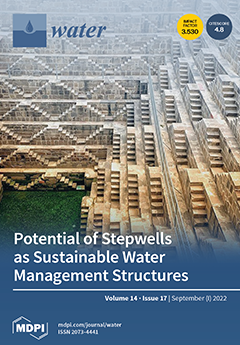Recirculating aquaculture systems (RAS) are important for water quality management in aquaculture facilities, and can help resume water consumption. However, information about the community structure of the micro-ecosystem existing in biofilters, especially the participation of the known nitrifying groups (i.e., AOA, AOB, NOB,
[...] Read more.
Recirculating aquaculture systems (RAS) are important for water quality management in aquaculture facilities, and can help resume water consumption. However, information about the community structure of the micro-ecosystem existing in biofilters, especially the participation of the known nitrifying groups (i.e., AOA, AOB, NOB, and comammox
Nitrospira), remains to be fully clarified. In this research, we compared the community structures in three RAS systems operated at different temperatures in a marine aquarium, through both
amoA-targeted qPCR assay and 16S rRNA-targeted next-generation sequencing. As result, AOA was the primary nitrifier in the biofilters and was typically abundant and diverse in high-temperature samples (ca. 25 °C). NOB’s relative abundance patterns were numerically similar to that of AOA, suggesting a cooperation relationship between AOA and NOB in the marine RAS system. AOB was at a comparable level with AOA in medium-temperature samples (ca. 19 °C), while their abundance sharply decreased in high-temperature samples. The number of observed OTUs of AOA in high-temperature samples was 1.9 and 1.5 times as much as that detected in low (ca. 10 °C) and medium temperature samples respectively, suggesting a much more diverse and predominant occurrence of AOA at high temperatures. Comammox
Nitrospira was only detected at a low level in the biofilter samples, suggesting a negligible contribution to the nitrification process in such ammonia-limited, saline biofilms. Although comammox
Nitrospira cannot be detected by 16S rRNA-based analysis, the high diversity and abundance of NOB that were detected in high-temperature samples indicated the prospective possibility of the occurrence of complete ammonia oxidation at high temperatures.
Full article





